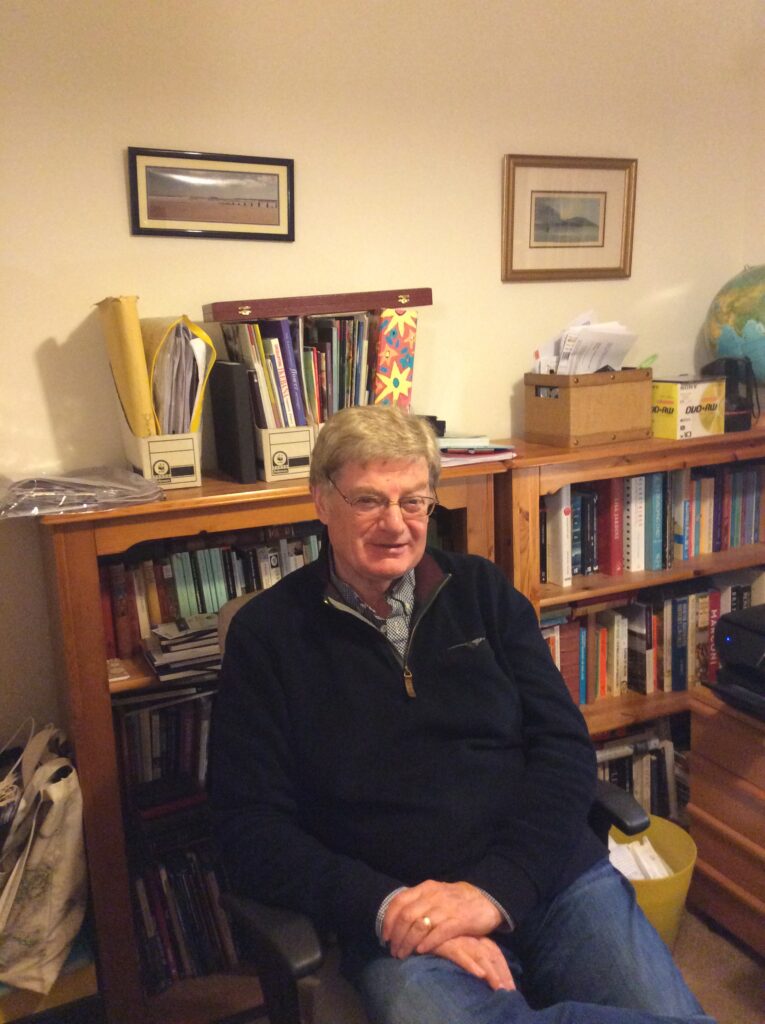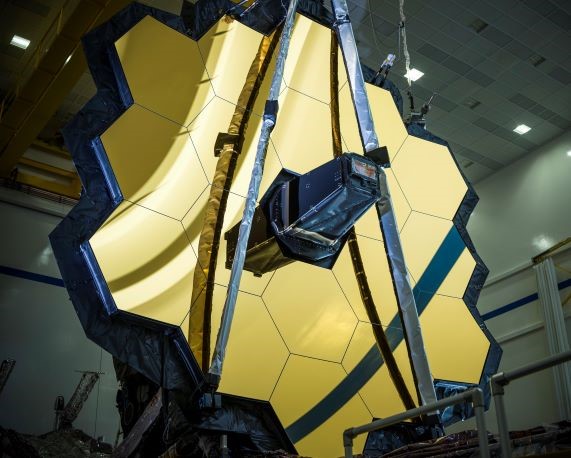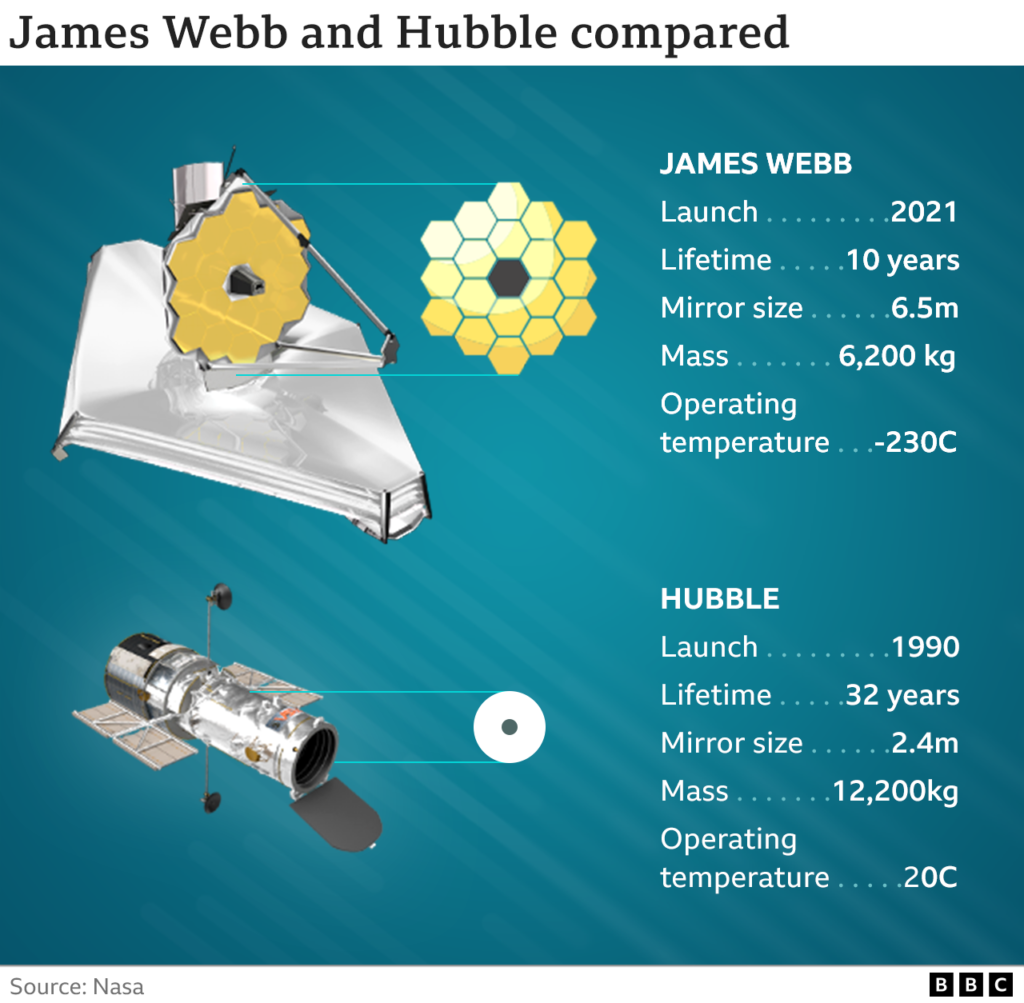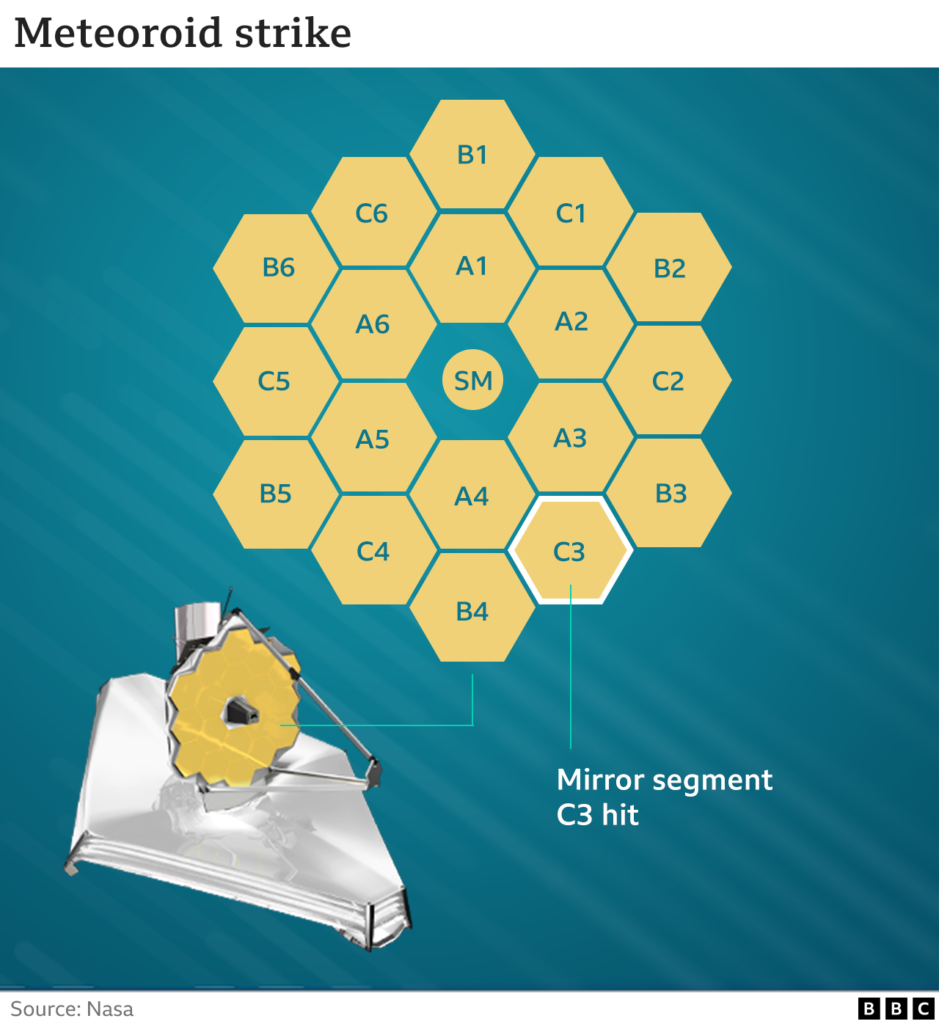7 July 2022
In search of the end of darkness
By Paul Branch

The shiny new James Webb space telescope is attracting all the headlines as scientists around the world wait expectantly for its first pictures of the past, but the venerable Hubble telescope is still out there, beavering away in search of more details of the history of the cosmos. Recently it spotted the most distant single star yet imaged by a telescope, whose light has taken almost 13 billion years to get here. To capture the star officially known as WHL0137-LS, but with the snappier nickname Earendel, is an immense achievement: at that distance telescopes would normally only be able to resolve galaxies composed of millions of stars, but Hubble got lucky. With a cluster of galaxies in the telescope’s line of sight, the gravitational pull from this great mass of matter will bend and magnify the light from more distant objects behind, acting like a zoom lens. In this case there was just Earendel lurking in the background which got the full Hubble treatment.
The previous record was held by a star called ito captured by Hubble, at a distance of 9 billion light years. Earendel is considerably further away, being seen at just 900 million years after the Big Bang which kicked off the Universe, or at a time when the Universe was only 6% of its current age. Sadly it’s likely that it no longer exists; such huge stars normally have short lifespans so it probably lasted for a few hundred million years before expiring in a supernova explosion.

Since its launch in 1990 into low earth orbit some 540 km away, NASA’s Hubble telescope remains one of the great astronomical successes. Its deep view into space has enabled the recording of the most detailed visible light images, leading to breakthroughs in astrophysics including determining the rate of expansion of the Universe. It will carry on for another 10-20 years or so until its orbit decays, no doubt continuing to amass scientific data to get astronomers’ juices flowing, but its successor, the James Webb telescope, bigger and even better, is already in position and raring to go. Launched on Christmas Day 2021 as a joint initiative between the American, European and Canadian space agencies, having taken 30 years of development at a cost of $10 billion, Webb weighs in at 6200 kg, half the weight of Hubble but with a mirror size of 6.5 m compared to Hubble’s 2.4 m. Webb also has superior analytical instruments designed to investigate in the infrared part of the spectrum new phenomena beyond Hubble’s optical (or visible) wavelength capabilities, but also enabling deeper investigations into Hubble’s discoveries.

Webb’s mission is to show us what the Universe looked like at the end of the age of darkness, when the first stars ignited and the cosmos began to fill with light. Its key components are the mirrors made of the lightweight metal beryllium that are capable of holding their shape at temperatures of -230C. Such low temperatures are necessary to keep the ambient heat energy down to a minimum during the sensitive measurements, and are achieved by means of a natty parasol which keeps the telescope in the shade of the cold dark cosmos. A layer of gold coating a few atoms thick turns the mirrors into near-perfect reflectors, ensuring 98% of the incident light from distant stars bounces back with minimal loss into Webb’s instruments. But the real magic is in the mechanical design and deployment of the mirror’s segments, all 18 of them.
The Webb is so big that it took an ESA Ariane 5 rocket to launch it from their spaceport at Kourou in French Guiana, with the telescope flat-packed into the nose cone of the rocket. Once in orbit the solar panels were deployed, and then the sun shield the size of a tennis court followed by the separation of its three insulation layers. That was the easy bit, controlled by the Space Telescope Science Institute in Baltimore via NASA’s telemetry and telecommand facility at nearby Goddard Space Flight Center. It was then the turn of the gold mirrors to be unfurled like a drop-leaf table; first the small secondary mirror, and then the main mirror’s two wings by rotating them through 90 degrees. Finally the 18 hexagonal elements of the primary mirror were adjusted for perfect alignment, within nanometres, to make them behave like a single monolithic reflector. Each segment has motors for movement in any plane plus the capability to bend the mirror to provide the exact required curvature with respect to its neighbour. Our highway code suggests that drivers adjust their mirrors before setting out, whereas Webb had the adjustments made as it was already rocketing along the Universe’s motorway. Little wonder it took five months to achieve a completely successful deployment.
So far so good. The launch of the space telescope was so precise that it now has more orbital station-keeping propellant than originally anticipated, increasing its lifetime from ten years to at least twenty. The first test image captured of a star via the fully aligned mirror was far sharper than had been expected. And the infrared detection and imaging system has been cooled down further to -267C (or 6 degrees Kelvin above absolute zero) by means of an active helium cooling unit that absorbs excess heat and dumps it well away from the ultra-sensitive instrumentation. All set then for the public release of the first set of history-making images from NASA on 12 July*. What could possibly go wrong …? Micrometeoroids, that’s what.

At the end of May a tiny rock fragment hit Webb’s primary mirror. The damage inflicted by the dust-sized particle left a dimple in one of the mirror segments (C3), and was the most recent and most significant event – there have now been five strikes recorded. At the rate things move through space even the smallest objects can impart a lot of energy and do damage. Webb’s mirrors have no external guard against the elements other than the sun shield, unlike Hubble with its tubular baffle protection. However, its designers were aware of possible meteoroid hits, along with other dangers from the space environment such as harsh ultraviolet light and charged particles from the Sun, as well as cosmic rays from elsewhere in the galaxy. Contingency measures were therefore incorporated into the construction components and the different operating modes of the telescope, to give margins in optical, thermal, electrical and mechanical performance. The positioning of the C3 mirror segment will be adjusted to compensate for at least some of the meteoroid distortion, but they can’t remove it all. NASA though seems confident that the eventual images we see will be no less stunning for all that.
The James Webb space telescope is currently gathering observations across the Universe, starting a series of revelations to the world from next week. In the longer term it will try to look for the very first stars to have illuminated the cosmos over 13 billion years ago, with no doubt some interesting scientific and philosophical discussions to follow. And it will focus its attention on distant planets to try to get an answer to the age old question: “Is anybody out there?”
*Note: nasa.gov/webbfirstimages Tuesday 12 July at 3.30 pm BST for aficionados
James Webb Space Telescope prior to launch (March 2020)
Credits: NASA/Chris Gunn

